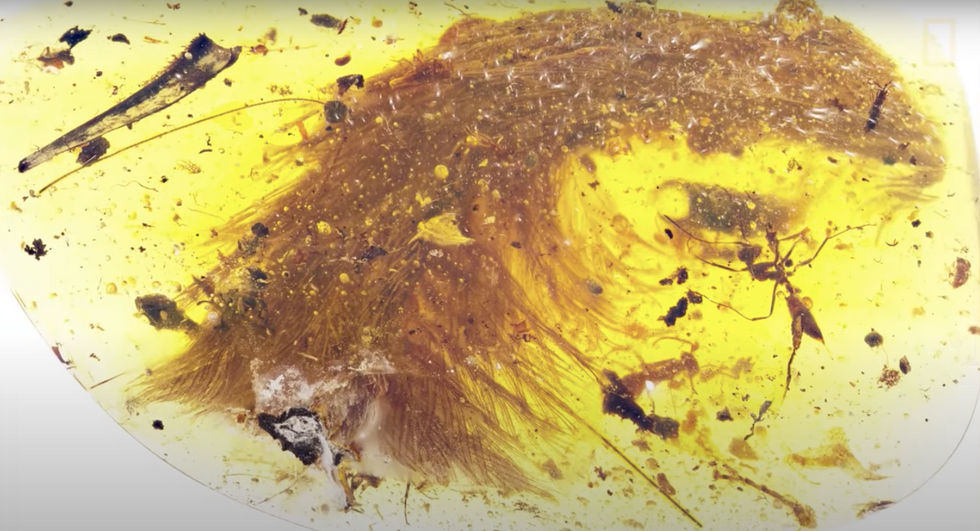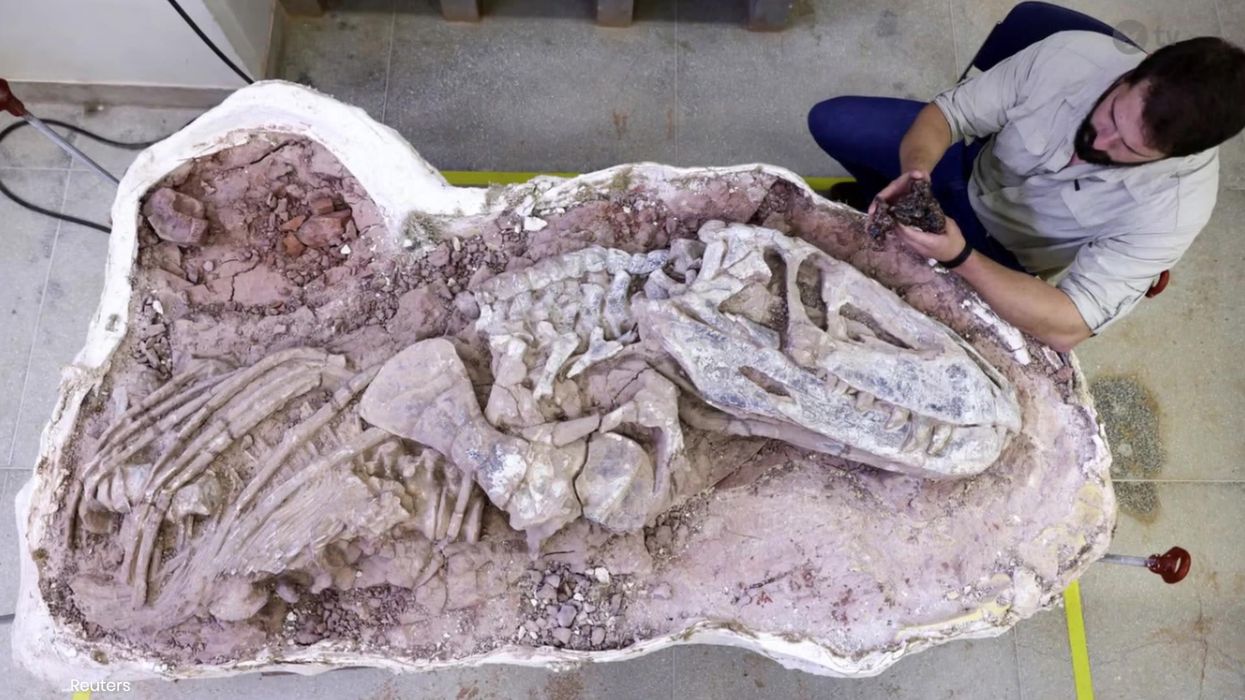Gregory Robinson
Oct 31, 2024
Discovery of one of the oldest-ever fossils sheds new light on rise …
Various
Scientists have discovered a dinosaur tail preserved in amber which sheds new light on what the creatures were like.
A specimen was found by a team of scientists in 2016 in Kachin State, Myanmar. Inside the amber is a feathery tail, and according to National Geographic, it’s believed to be about 99 million years old.
Scientists know that the tail belonged to a dinosaur and not an average bird because it is flexible. Researchers from China and Canada believe the tail came from a young coelurosaur, which is a group that includes dinosaur species similar to birds with two legs, per Current Biology.
The fascinating specimen also includes bones, soft tissue as well as feathers. It’s the size of a dried apricot and solidifies the evolutionary difference between the feathers on birds of flight and dinosaurs.
The research, which was led by palaeontologist Lida Xing from the China University of Geosciences, ruled out the possibility that the tail belonged to a prehistoric bird because of the specimen’s vertebrae.

Xing found the specimen at an amber market, and it was originally intended to be a piece of jewellery or just an interesting looking souvenir. The traders at the market thought a plant was trapped inside the 6.5 gram amber, rather than a piece of a prehistoric animal that could have fit in the palm of your hand.
“I realised that the content was a vertebrate, probably theropod, rather than any plant,” Xing shared with CNN.
“I was not sure that [the trader] really understood how important this specimen was, but he did not raise the price.”
The findings shed new light on how dinosaurs looked. Fragments of bird wings from the dinosaur era have been found preserved in amber before, but this was the very first time a dinosaur skeleton had been found, CNN reported.
The research’s co-author and palaeontologist at the Royal Saskatchewan Museum in Canada, Ryan McKellar, shared: "It’s a once in a lifetime find. The finest details are visible and in three dimensions.
"The more we see these feathered dinosaurs and how widespread the feathers are, things like a scaly velociraptor seem less and less likely and they’ve become a lot more bird like in the overall view.
"They’re not quite the Godzilla-style scaly monsters we once thought."
Sign up for our free Indy100 weekly newsletter
How to join the Indy100's free WhatsApp channel
Have your say in our news democracy. Click the upvote icon at the top of the page to help raise this article through the Indy100 rankings
Top 100
The Conversation (0)














